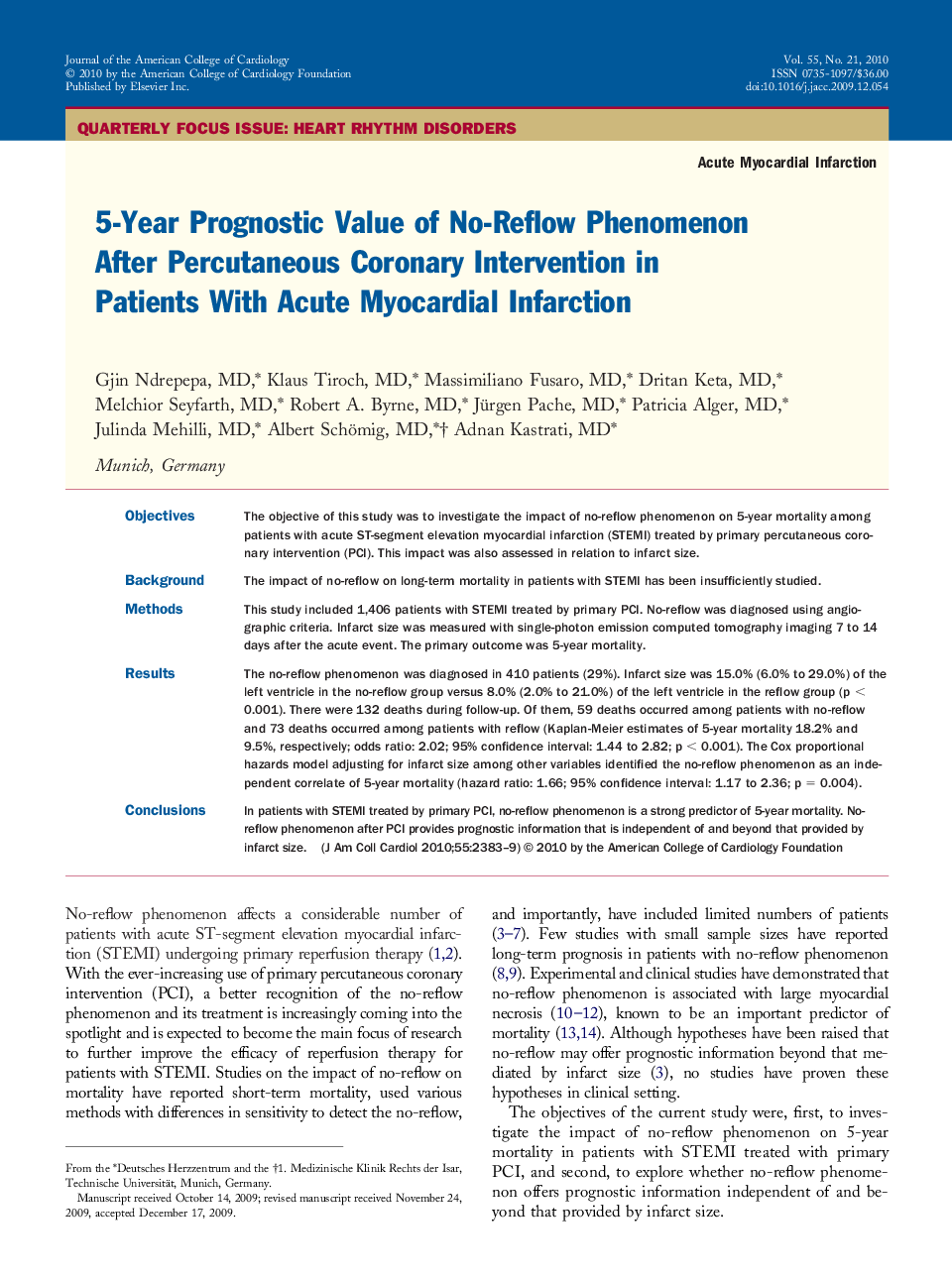| Article ID | Journal | Published Year | Pages | File Type |
|---|---|---|---|---|
| 2950980 | Journal of the American College of Cardiology | 2010 | 7 Pages |
ObjectivesThe objective of this study was to investigate the impact of no-reflow phenomenon on 5-year mortality among patients with acute ST-segment elevation myocardial infarction (STEMI) treated by primary percutaneous coronary intervention (PCI). This impact was also assessed in relation to infarct size.BackgroundThe impact of no-reflow on long-term mortality in patients with STEMI has been insufficiently studied.MethodsThis study included 1,406 patients with STEMI treated by primary PCI. No-reflow was diagnosed using angiographic criteria. Infarct size was measured with single-photon emission computed tomography imaging 7 to 14 days after the acute event. The primary outcome was 5-year mortality.ResultsThe no-reflow phenomenon was diagnosed in 410 patients (29%). Infarct size was 15.0% (6.0% to 29.0%) of the left ventricle in the no-reflow group versus 8.0% (2.0% to 21.0%) of the left ventricle in the reflow group (p < 0.001). There were 132 deaths during follow-up. Of them, 59 deaths occurred among patients with no-reflow and 73 deaths occurred among patients with reflow (Kaplan-Meier estimates of 5-year mortality 18.2% and 9.5%, respectively; odds ratio: 2.02; 95% confidence interval: 1.44 to 2.82; p < 0.001). The Cox proportional hazards model adjusting for infarct size among other variables identified the no-reflow phenomenon as an independent correlate of 5-year mortality (hazard ratio: 1.66; 95% confidence interval: 1.17 to 2.36; p = 0.004).ConclusionsIn patients with STEMI treated by primary PCI, no-reflow phenomenon is a strong predictor of 5-year mortality. No-reflow phenomenon after PCI provides prognostic information that is independent of and beyond that provided by infarct size.
